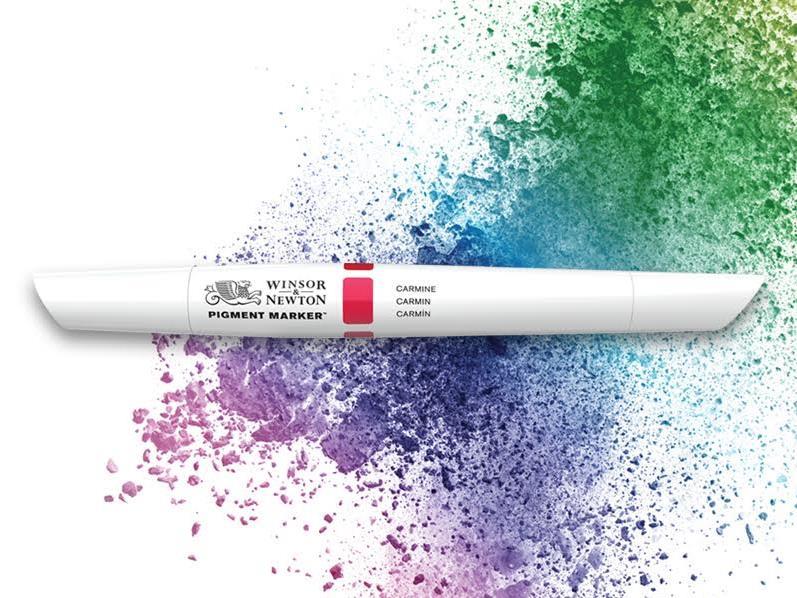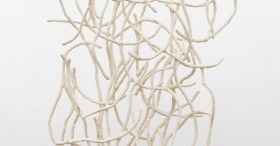Image: supplied.
For Natalie O’Connor, Resident Artist for the art supplies manufacturer Winsor and Newton, artist materials are not just tools but a complex part of her practice.
As an artist who documents and experiments with artists’ colours as part of her practice, O’Connor collaborates with the scientists at Winsor and Newton’s innovation and development labs.
‘I’m interested in how new colours are developed and the impact that they have on artists’ practice. My current research also explores the permanency of colours and how they are in a constant state of flux.’ She said.
Artists’ colours should use pigments that are permanent and lightfast so that they resist fading and changing over time.
O’Connor’s interest in pigments also extends to an understanding of how pigments have evolved to combat the reality of fading and peeling paint.
‘When we choose pigments for our artists’ ranges, there are a whole lot of tests that are done on pigments at the laboratory before it even goes into the paint,’ said O’Connor.
‘As a result of working so closely with the scientists, my own work has become quite experimental in nature. It may not be one individual artwork, but it is a complete dialogue and a collection of images and experiments to see changes in colour over periods of time. So I’m an artist who works like a scientist in some ways.’
Experimenting with a new material can even help unlock an artist’s creativity and move their work in a new direction they hadn’t considered before, said O’Connor.
The latest inventions
With advances in the technology, the colours now available to contemporary artists are more robust than ever. Recently these innovations have transformed the humble marker from a dye based product to a painterly pigment.
In a world first for the industry, Winsor and Newton have introduced Pigment Markers.
Find out more about the Winsor and Newton Pigment Markers
‘The first thing to realise is that with a pigment, it’s a solid particle and pigments are really quite stable. Whereas the more familiar general purpose marker uses dye based colours. Dye based markers or dye based colours are known to fade at quite a rapid rate. So to be able to put pigments into a marker and have the resulting drawings and artworks being done with more robust colour means that those artworks are going to last,’ said O’Connor.
The lightfast quality of the Winsor and Newton Pigment Markers means they don’t fade under normal gallery conditions.
‘All the pigments are lightfast – that’s something that dyes aren’t. It’s kind of getting right back to the basics of asking yourself when you’re using materials to make an artwork (and this is where the science comes in) – is it a dye or is it a pigment? And artists know that if they are working with pigments it will last,’ said O’Connor.
‘Some pigments obviously last longer and they are more robust than others, but for the Winsor and Newton range we clearly label its lightfastness rating and the pigments used.’
Buy Winsor and Newton Pigment Markers
Next week O’Connor will be leading a team of artists into remote New South Wales and will be taking her Pigment Markers with her. ‘I’ll take the pigment markers out there because it will be a really good way for me to easily walk out into very remote areas, to be able to just take a small drawing board with the markers that I know are going to be exactly the same colours I can work with out of a tube as well. So there’s a really nice correlation with me being able to draw the environment I see and then be able to come back to the studio and work those drawings in a different way.’
With the launch of the new Pigment Markers also came the announcement of the world’s first Unique White Blender, which allows artists to mix and blend an unlimited colour palette and create a wide range of textures and tones.
‘I’m an artist who makes lots of mistakes, so I love the ability to put the colour down and then rework it and keep budging the lines and the marks around. It gives you that ability to come back the next day and rethink the image, or just add another layer to it. Whereas, if I was using a dye based marker, you really can’t move it around or shift it in any way,’ said O’Connor.
‘To work on Winsor and Newton Pigment Maker Paper, which is smooth, was a challenge at first but I actually have to say it has been something that has benefited my drawing practice because you have to work with the surface in a very different way. It challenges you to make changes and I think that’s a good thing for any artist, to break your habits. Embracing something new will allow you to move in a direction with your art practice that you hadn’t considered before and it’s the material that can often direct that without you even realising.’
ArtsHub are pleased to announce that Winsor and Newton Pigment Markers are now available in Australia. For more information about the new Winsor and Newton Pigment Markers visit Eckersley’s Art & Craft online at www.eckersleys.com.au/products/winsor-newton-pigment-markers, or visit a store to speak to the Eckersley’s team and have all your marker questions answered.





